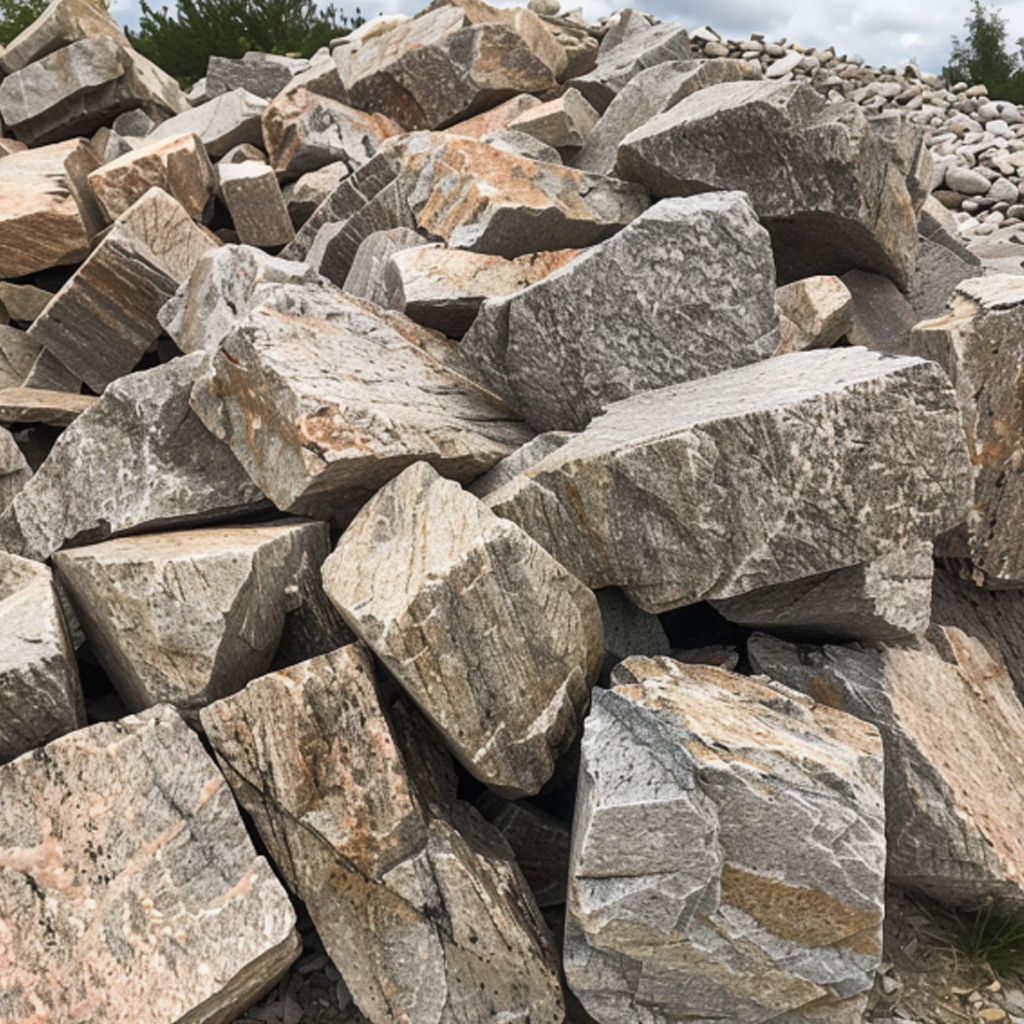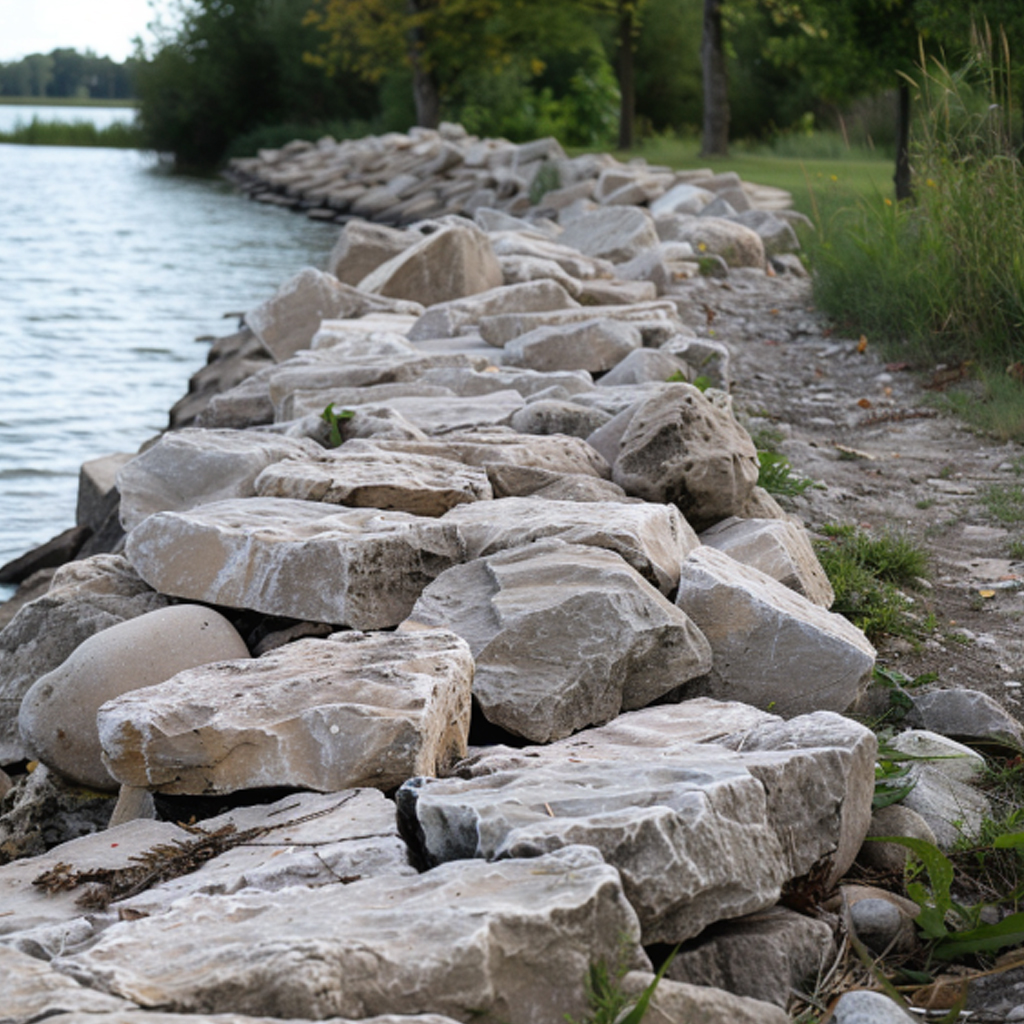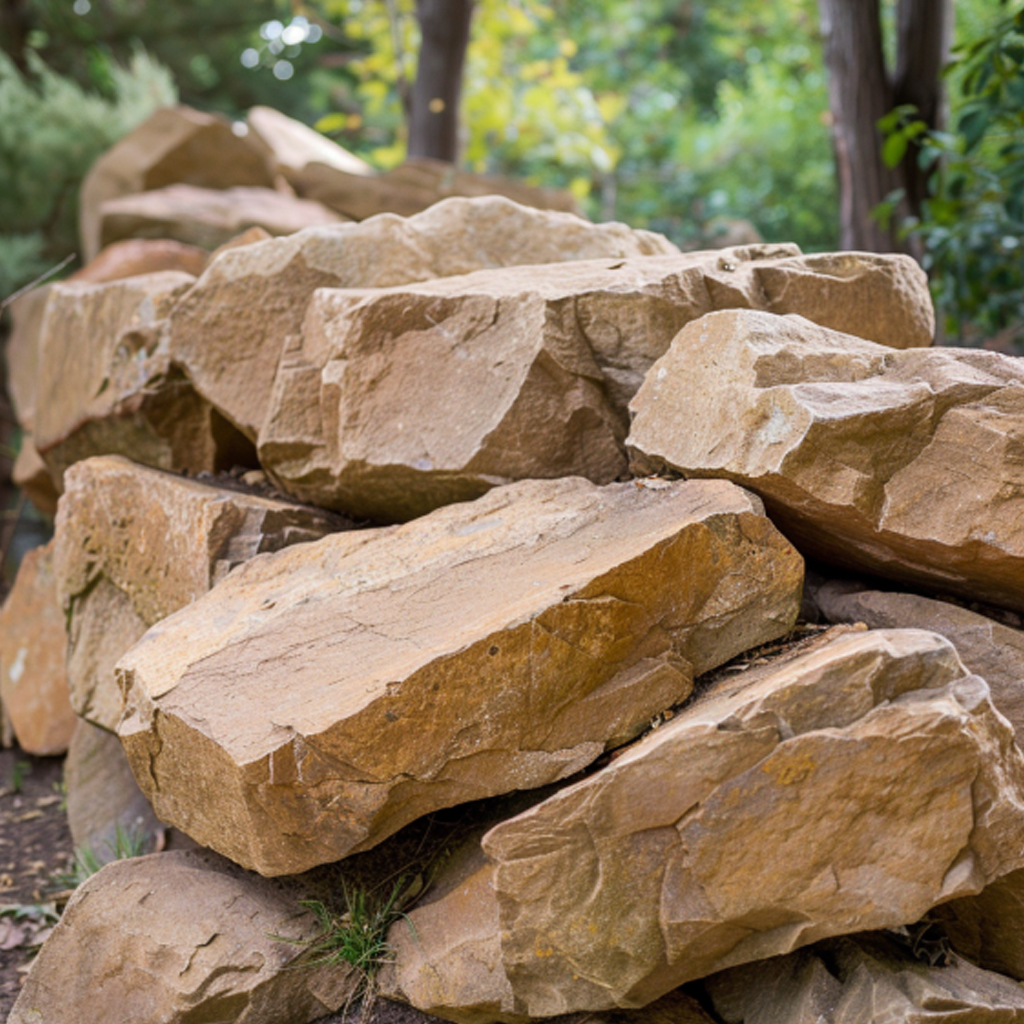
Granite riprap is available in various sizes to suit different project requirements:
Granite riprap is versatile and can be utilized in a variety of applications, including:

Limestone riprap is a sedimentary rock material widely used for its affordability and effectiveness in erosion control. It is composed mainly of calcium carbonate, giving it a lighter color compared to granite. Limestone riprap is relatively easy to quarry and shape, making it a popular choice for various projects.
Limestone riprap comes in a range of sizes to meet different needs:
Limestone riprap is effective in multiple applications, including:

In addition to granite and limestone, other materials can be used as riprap, each offering unique properties and benefits. These materials are selected based on the specific requirements of the project and the environmental conditions.
Other materials like concrete, sandstone, and fieldstone offer additional options for specific applications.
At Florida Riprap Solutions, we provide expert guidance to help you select the best material for your erosion control and shoreline protection needs.